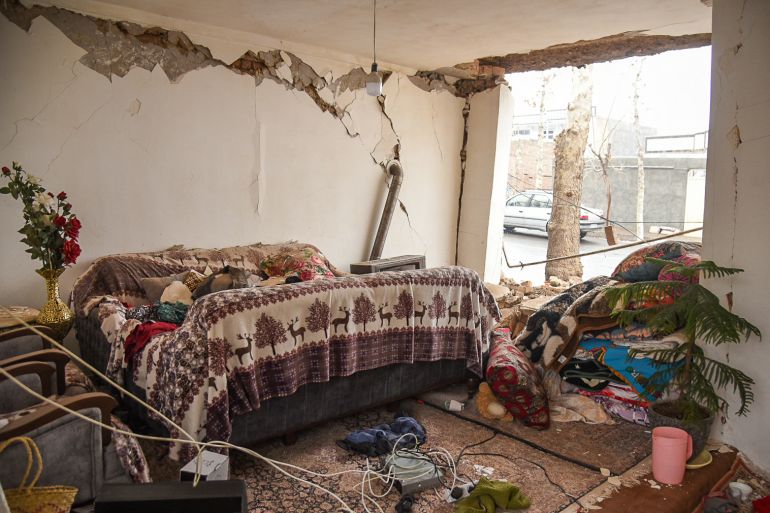Understanding the Impact of the Recent Earthquake in Iran
On January 29, 2023, a devastating earthquake in Iran struck the city of Khoy, located in the northwest part of the country, leaving a significant mark on the local community and raising concerns about disaster preparedness and response strategies. According to reports from Al Jazeera, this seismic event has claimed the lives of several individuals and resulted in numerous injuries, necessitating urgent attention from government and international aid organizations.
The Geography of Earthquakes in Iran
Iran has a long history of seismic activity due to its location on the boundary of several tectonic plates. The country experiences frequent earthquakes, which can vary in magnitude and impact. The January earthquake, measuring 5.9 on the Richter scale, serves as a stark reminder of the natural threats that the region faces. Understanding the geology of Iran is crucial for both residents and policymakers in developing effective disaster management strategies.
Immediate Effects of the Khoy Earthquake
The immediate aftermath of the earthquake was chaotic. Rescue workers, supported by local volunteers, scoured through the rubble for survivors, providing first aid to the injured, and assisting the families of victims. The Iranian government quickly mobilized resources, deploying medical teams and rescue units to the affected areas. The public’s response was one of solidarity, with many locals opening their homes to those displaced by the earthquake.
Furthermore, the infrastructural damage in Khoy has raised alarms regarding building codes and the resilience of urban planning in seismic areas. Analysts suggest that many structures were not built to withstand such seismic events, leading to calls for a reassessment of construction practices in the country.
The Role of Government and International Aid
The Iranian government has begun to implement measures to address the immediate needs of those affected. Temporary shelters were established, and medical services were made available to the injured. However, the full extent of the damage, both structural and humanitarian, will take time to assess accurately.
International aid organizations are also poised to assist. Their expertise in disaster response can complement local efforts, providing necessary resources and skills to manage the crisis effectively. Collaboration between governmental and non-governmental organizations will be essential in ensuring efficient delivery of aid and the restoration of normalcy in the affected regions.
Public Safety and Preparedness
This earthquake in Iran has reignited the conversation around public safety and preparedness against natural disasters. As HR professionals and business leaders, it is critical to understand the implications of such disasters on operations and workforce management. Companies in earthquake-prone areas are encouraged to develop comprehensive emergency response plans that include drills, training, and readiness assessments.
Organizations should also consider facilitating workshops on earthquake preparedness for their employees, promoting awareness of safety protocols during seismic events. This initiative can foster a culture of safety and resilience, demonstrating a company’s commitment to the well-being of its staff.
Long-Term Impacts on the Community
The long-term impacts of this earthquake in Iran extend beyond immediate physical damage. There is considerable psychological trauma that survivors may experience, necessitating mental health support and counseling services. Mental wellness is an often-overlooked aspect of disaster recovery, and addressing it should be integral to recovery efforts.
Furthermore, rebuilding efforts can stimulate local economies if approached sustainably. A long-term plan that includes community input can rejuvenate the area while ensuring that new buildings meet improved safety standards. This is an opportunity for urban planners and government officials to innovate and implement practices that can shield communities from future disasters.
Learning from Past Earthquakes
History serves as a valuable teacher. Past earthquakes in Iran have exposed trends that should inform current practices. By analyzing these events — their impact, response, and recovery — experts can glean insights that better prepare communities for future incidents. Such knowledge can drive policy changes and investment in infrastructure designed to address the unique challenges posed by seismic activity.
The Path Forward
As we reflect on the earthquake in Iran, it becomes clear that resilience stems from preparedness, collaboration, and a commitment to community welfare. Business leaders and HR professionals play a pivotal role in shaping a culture of safety and readiness, not just within their organizations, but in the wider community. By engaging in disaster preparedness strategies and supporting local initiatives, companies can demonstrate their corporate social responsibility.
This recent earthquake serves as a wake-up call to nations around the globe, reminding us of the unpredictable nature of our planet and the importance of being prepared. As new seismic events unfold, we must carry forward the lessons learned and work toward building a more resilient society for present and future generations.








